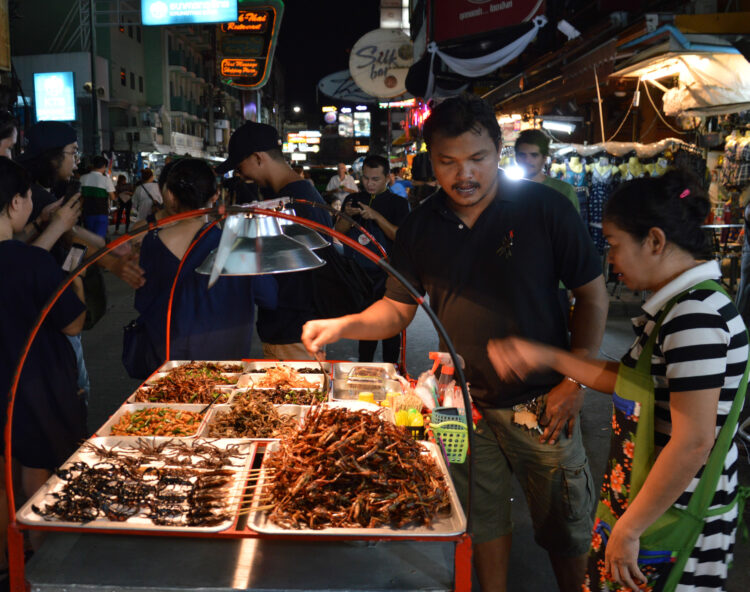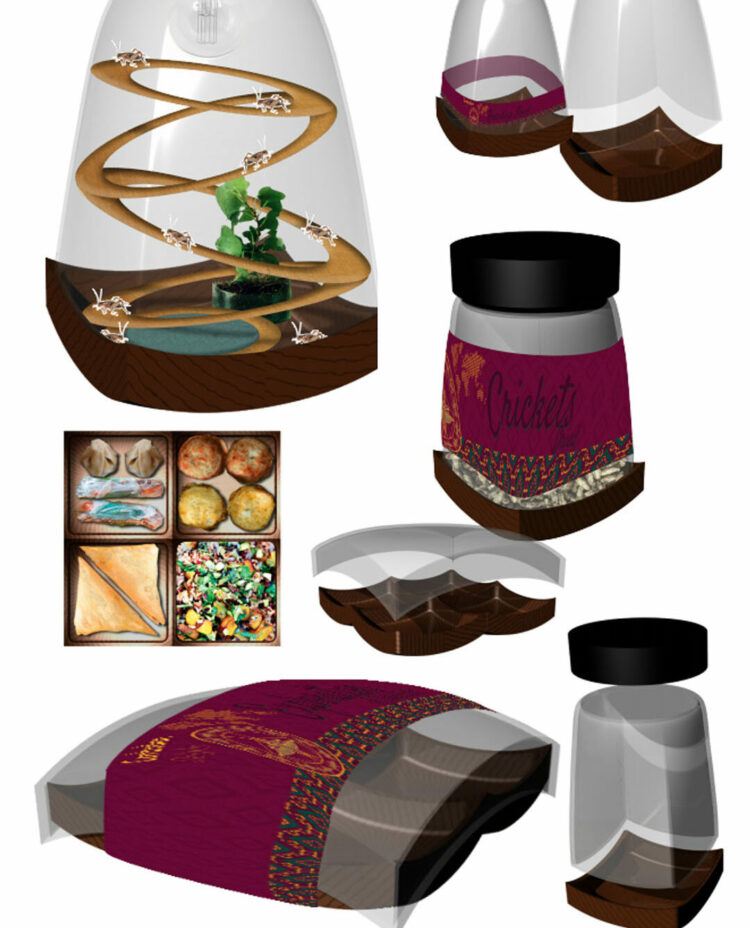Familiarizing consumers with eating insects
Project by Roos Durieux
Supervised by Rick Schifferstein and Annemiek van Boeijen
As meat production is evaluated to be unsustainable in the long term, there is a need to find new protein sources as meat alternatives (Verkerk, Tramper, van Trijp, & Martens, 2007). This sustainable alternative could be insects, because the conversion from plant to insect protein is highly efficient compared to livestock, while needing less land and producing less CO2 (DeFoliart, 1999; van Huis et al., 2013). However, a major challenge that needs to be overcome is that many people in Western countries experience feelings of disgust, aversion, or distaste towards insects in general and as food in particular, since they are not familiar with such ingredients (Deroy, Reade, & Spence, 2015). In addition, in countries where eating insects is more common, insects are often seen as food for poor people and the more affluent people will be reluctant to consume them. The fact that people experience these negative emotions hinders a greater acceptance of insects as an edible product.
Recently, encouraging the consumption of insects in developed countries has gained momentum, but before people in these cultures accept this new type of food, a product that enables a social and psychological acceptance of insects as an edible product needs to be designed. This, in its turn will facilitate the introduction of insects in the Western diet. Roos Durieux (2017) aimed to develop an intervention (a product-service combination) that would increase acceptance of insects as food in a Western country and at the same time would improve acceptance and the status of insect foods in Eastern countries in which the eating of insects was more common and accepted. In each case, improving acceptance would imply an increase in understanding and in the meaning of insect products (Durieux, 2017). She started out with a multicultural exploration in three countries, both Western (the Netherlands) and Eastern (Thailand and Cambodia). This resulted in an extensive, multifaceted vision that included all three contexts and a final design that is mainly targeted at the Dutch population, but would fit the Cambodian and Thai contexts as well. The products designed try to build bridges between the different contexts and influence all settings in different ways.


In the Netherlands, the intervention targets people who find healthiness and sustainability important, who would typically travel to Eastern countries and have seen insects presented as foods in local markets and restaurants. During their travels, they encounter insect products in restaurants for foreigners that are typically also run by foreigners. In this context, insects are seen as local curiosities and insects can become a delicacy, a premium snack that expresses important values like togetherness, altruism, and care for the environment. This encounter with colorful and intriguing insect foods will help to develop a positive attitude towards cooking with and eating insects. This opens up the possibility for trying insect foods when they get back home as well.
The final design consists of three different products (a cricket breeding bowl, insects as ingredients, a cricket tapas package) and an information flyer. Together the products cover various stages of discovering insect foods. No matter which type of product you encounter first, they each provide an entry into the process of becoming acquainted with insect foods and may trigger people to try out the other products as well. The products are all interconnected by a consistent visual style that connects to traditional Cambodian images and fabric patterns.
- The cricket breeding bowl fits the restaurants and cafés in Asia that are owned by foreigners. It lets customers experience the positive sides of cricket breeding: that they are clean, fun, beautiful, and create interesting and tasteful dishes. In addition, the breeding bowl can be sold in specialty stores for gardening and for biological and sustainable food products in Western countries. It contains an instruction on how crickets can be bred and harvested at home.
- Crickets as ingredients are presented in dried form in a jar that can be shown in the shelves of Western supermarkets among dried ingredients. It encourages people to cook with dried insects.
- The cricket tapas exist of four different types of snacks inspired by Cambodian snacks (e.g., samosas). They offer an opportunity for Western consumers to experience the sensory properties of various insect foods and to become familiar with Cambodian flavors. The tapas are offered as snacks in the fresh food section of Western supermarkets among sushi and salads.
The flyer explains the story of crickets and their role in food habits in Asia. In addition, it gives recipes and links to insect cookbooks. It presents the three different products described above and links them together. Connecting the breeding, cooking and eating of insects allows consumers to become acquainted with all the fascinating aspects of interacting with insects as valuable and sustainable sources of food.

References
DeFoliart, G. R. (1999). Insects as food: why the western attitude is important. Annual review of entomology, 44, 21-50.
Deroy, O., Reade, B., & Spence, C. (2015). The insectivore’s dilemma, and how to take the West out of it. Food Quality and Preference, 44, 44-55.
Durieux, R. (2017). Today’s menu: Cambodian Delights – A multi-cultural exploration into the acceptation of insects as ingredients. (Master Thesis). Delft University of Technology, Delft.
van Huis, A., van Itterbeeck, J., Klunder, H., Mertens, E., Halloran, A., Muir, G., & Vantomme, P. (2013). Edible insects: future prospects fo food and feed security (Vol. 171). Rome: FAO.
Verkerk, M. C., Tramper, J., van Trijp, J. C. M., & Martens, D. E. (2007). Insect cells for human food. Biotechnology Advances, 25(2), 198-202.
Want to read more about this project?
Download Roos’ report.
